You thought you'd have your hands full picking what sort of lens features you want, and now you have to pick a lens material too. What's up with that? Stick with us to learn more about the nitty-gritty of lens material thickness.
Lens Material Thickness Comparison
1. What to Expect
2. The Setup
3. Prescription Thickness
4. Center Thickness
5. Thickest Edge
6. Weight
7. Tyler's Takeaway
8. Prescription Glasses at SportRx
Eyeglass Tyler covers the highly technical topic of lens thickness; going over how we determined the thickness, what the thickness was in several points of the lens, then compares the weight of each lens.
What to Expect
We're comparing the following 5 lens materials:
- CR-39 (plastic)
- Polycarbonate
- Trivex
- High Index 167
- High Index 174
These are the most common lens materials found in prescription lenses.
However, it's important to note that this blog post concerns itself primarily with lens thickness rather than the pros and cons of each material. There's no one material that's best for you, as it all depends on what you use your glasses for. Feel free to reach out to us if you have more questions on which type of lens you should get.
Before we get started, we also want to note that there are many variables that affect lens thickness, so we can only give a ballpark estimate on how thick your lens will be. However, knowing the trends that different lens materials follow is still a good rule of thumb to use.
The Setup
To ensure consistency when possible, we measured lens thickness using the same frame and pupil distance (PD) measurement and a few different prescriptions.
Our frame example was the popular RAEN Dudley.
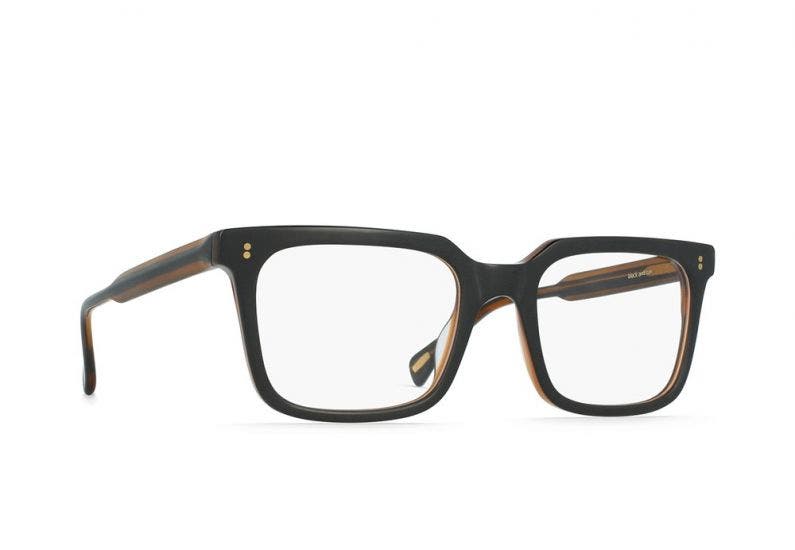
RAEN Dudley in Black and Tan
Shop RAEN Dudley
We selected this frame because not only is it a great look, it has a fairly large lens and a square lens shape. These are both factors that influence the lens thickness as well.
Our example prescriptions are -3 and +2 for the average range and -6 and +5 for the strong range.
Again, our thickness measurements are only an estimate for your glasses because there are so many other factors that influence the exact measurements. Our examples are just to show general trends.
Prescription Thickness
Some of the factors that influence the prescription lens thickness are as follows:
- A plus (+) prescription makes the lens thickest at the center (convex)
- A minus (-) prescription makes the lens thickest at the edge (concave)
- Frame & lens size
- PD measurement
Another important factor in prescription lenses is the OC, or ocular center. This refers to the clearest part of the lens and is based on your PD as well as the frame shape. Note that the OC rarely ends up in the "geometric center" of the lens, or what you can also think of as the true center point, as shown in the graphic below.
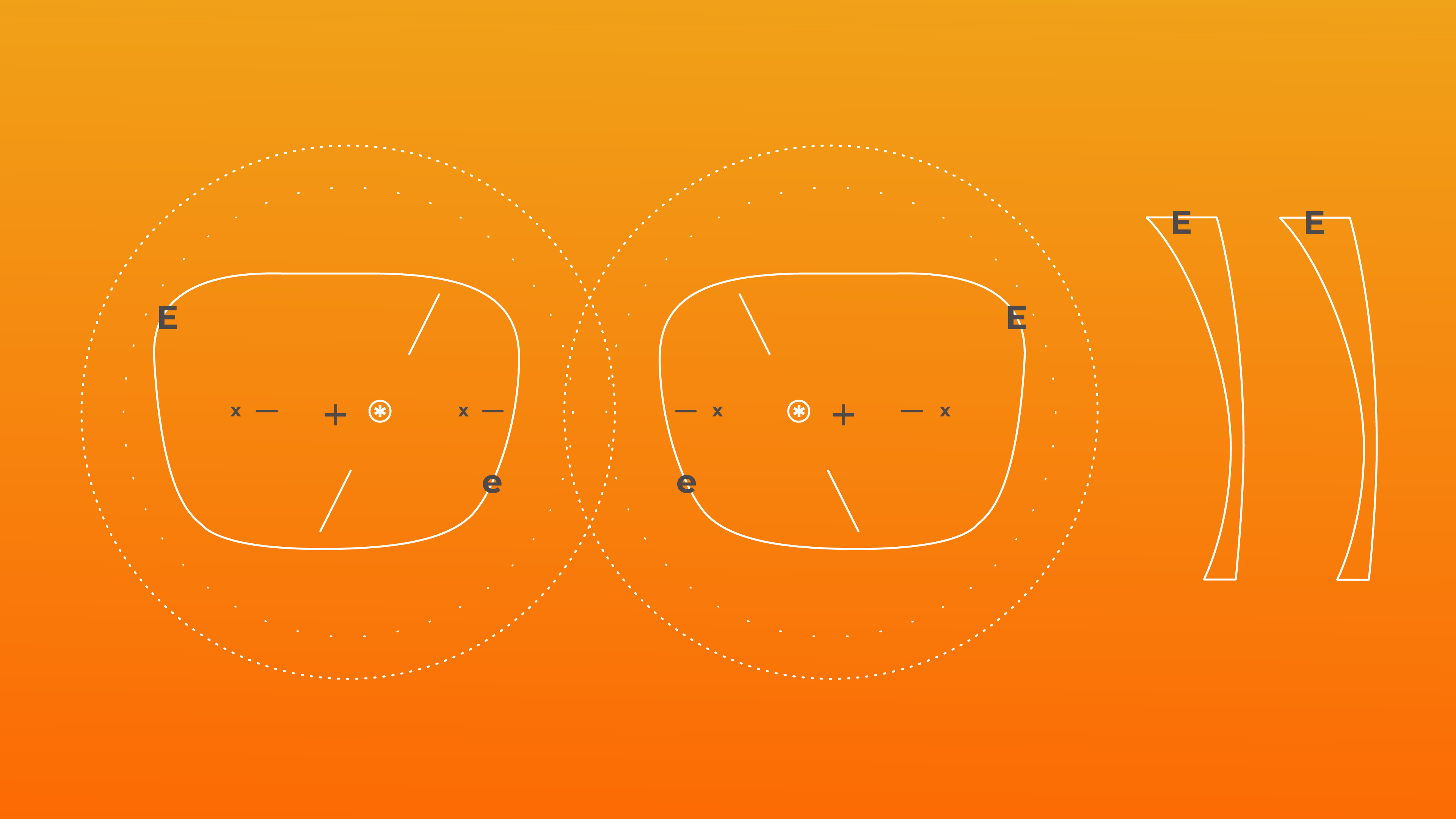
The + represents the geometric center, while * is the OC. Additionally, the placement of the E and e can change based on your prescription and axis, so they won't be in the same place every time. Essentially, this means that one side of the lens will be slightly thicker than the other.
With all that out of the way, the 3 comparison factors we're using are center thickness, edge thickness, and weight.
Center Thickness
The fun part! We're comparing the thickness of the center of the lens. Remember, minus prescriptions are thinnest at the center.

As you can see from the graphic, with a -3 prescription the CR-39 lens is thickest but they're all fairly close. This is because impact-resistant lenses can go as thin as 1.5mm. Since CR-39 is not impact-resistant, the thinnest it can go is 2mm.
Next is the -6.

Still the same as the weaker prescription, because again, this will be the thinnest point of the lens.
Now for the +2.
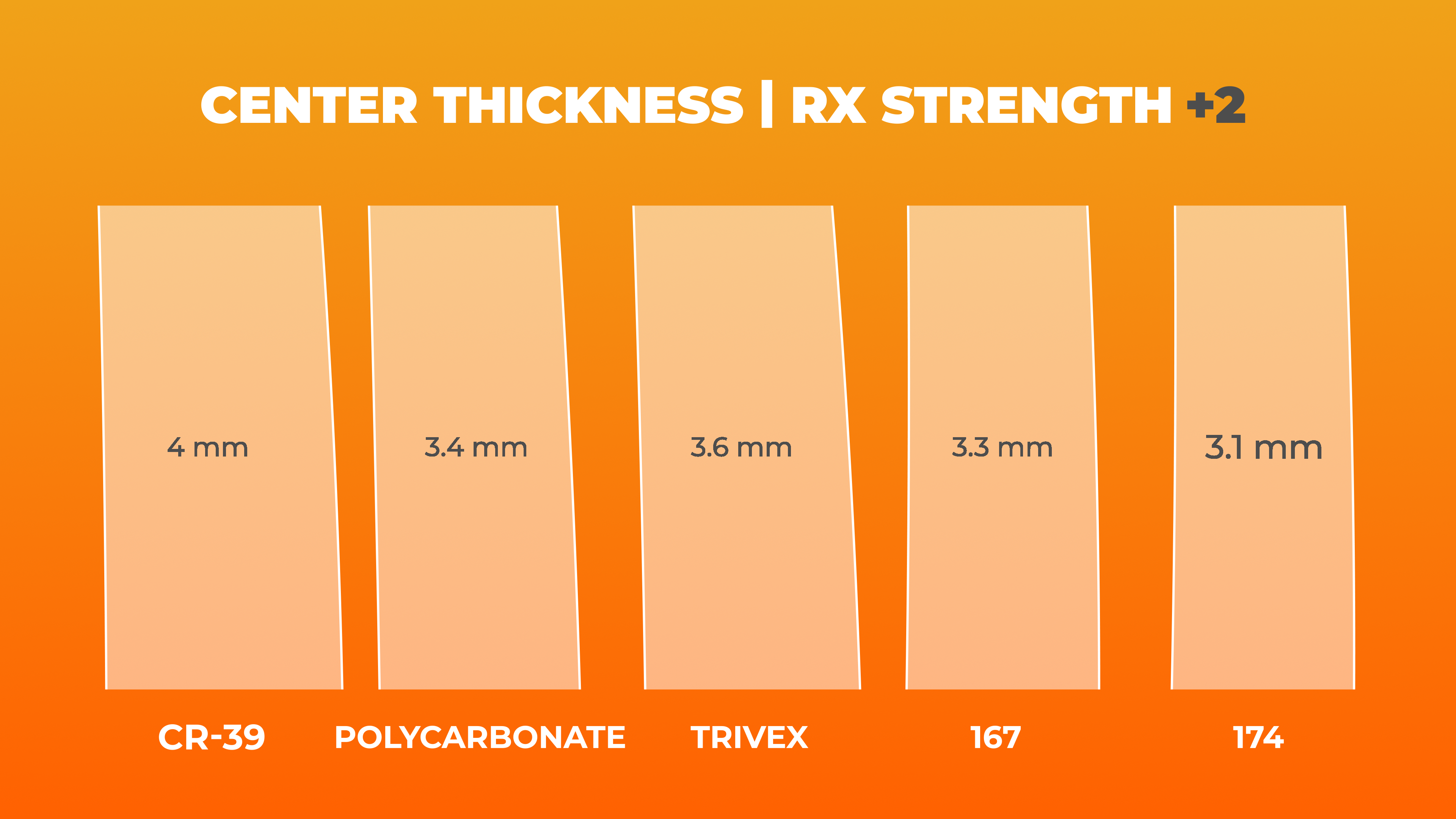
As you can see, CR-39 is the thickest again. Comparing this to the -3, we don't usually recommend a thinner lens material for a weaker prescription because it doesn't make much of a difference.
Last is the +5 prescription.
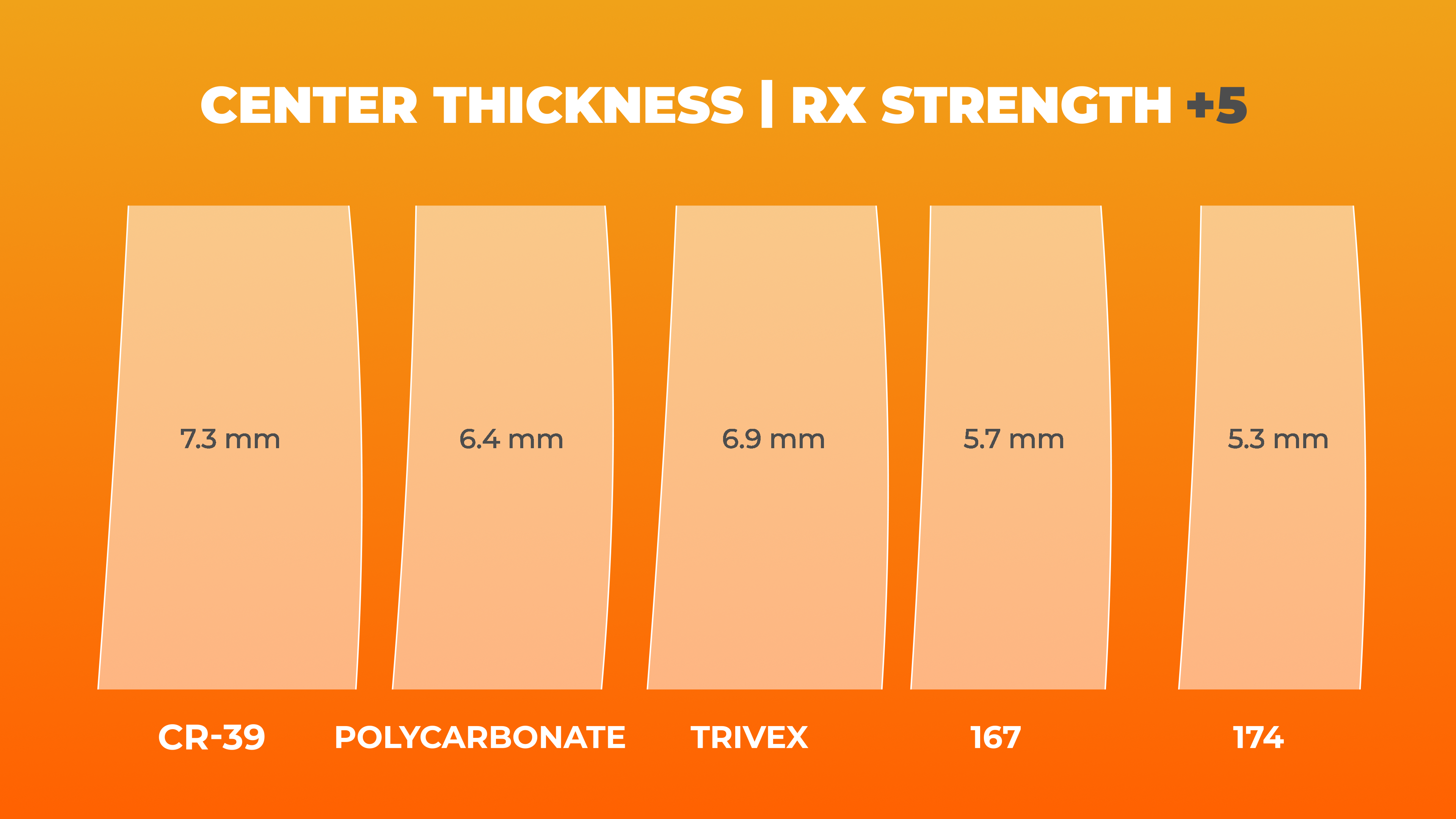
There's a pretty large difference of 2mm between the thinnest and thickest in this, but the others are still fairly close. However, many more comparisons to go!
Thickest Edge
Now we're comparing the thickest of the lens edges. As you'll remember from earlier, a minus prescription means the lens will have thicker edges.
From the +2 lens, you can see there are a few minor differences between lens materials.
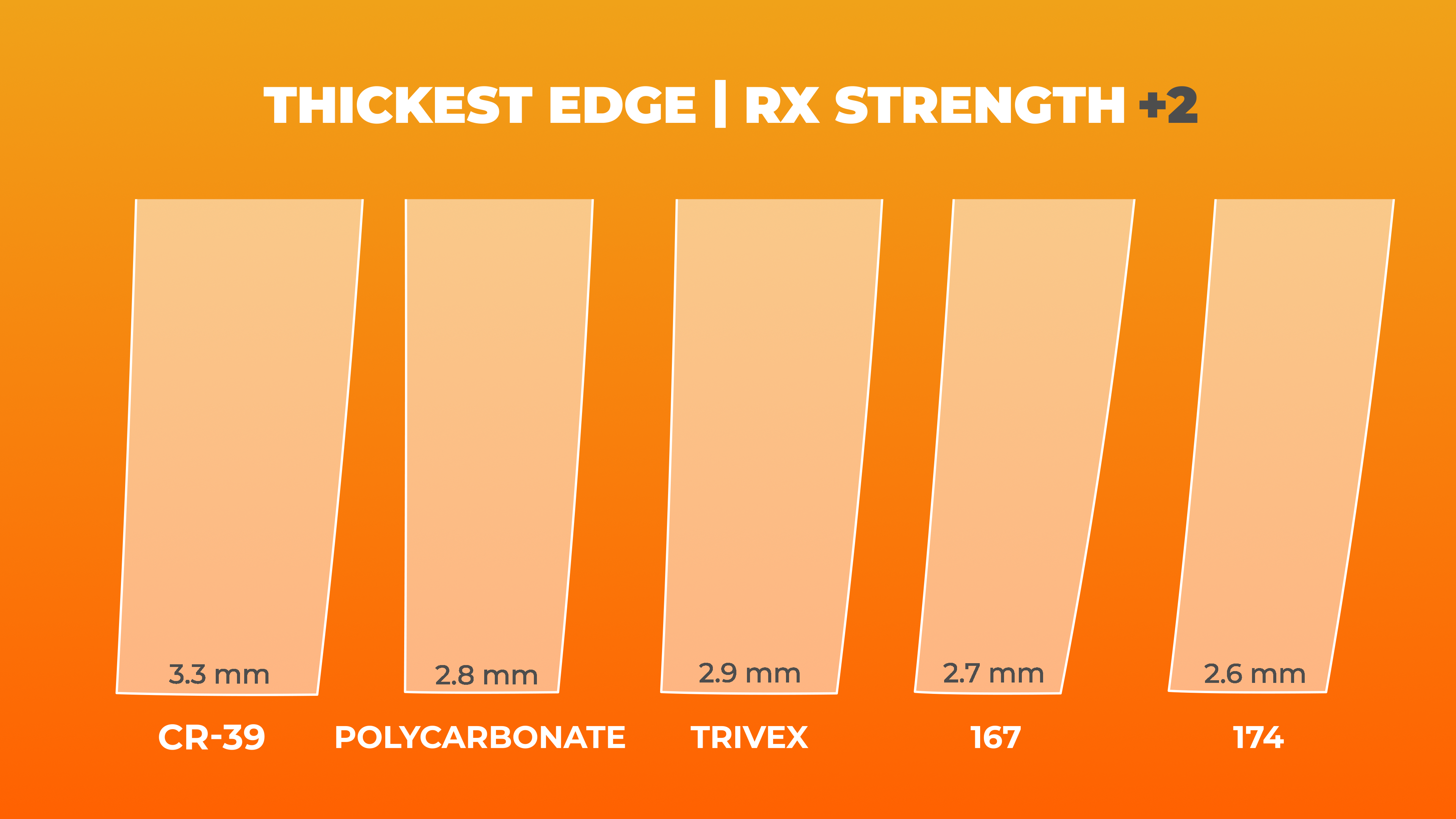
+5 has more differences.
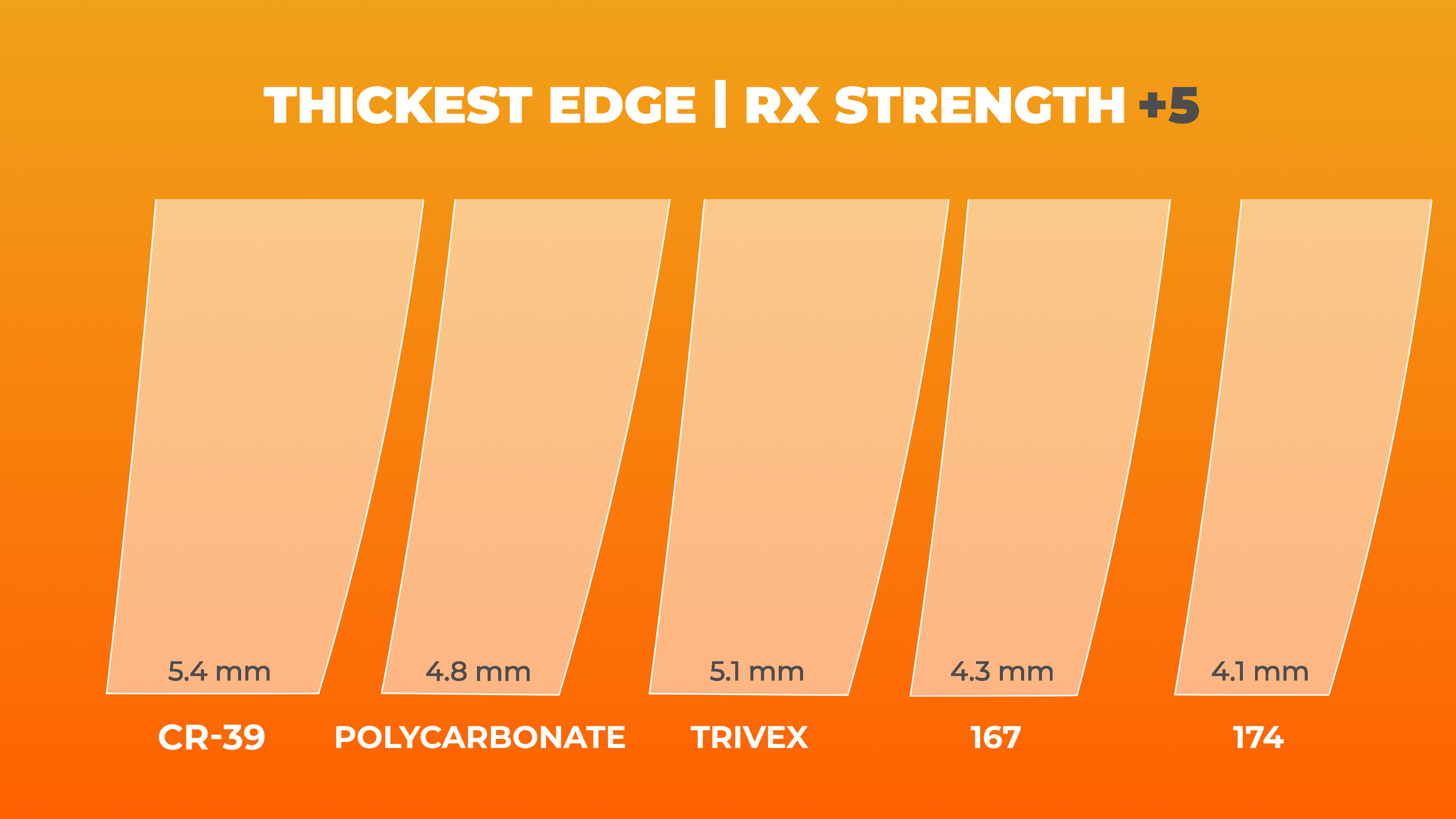
You lose over 1mm of thickness from the lens by using a high index material, so though it's a difference, it's not huge.
For the minus prescriptions, -3 shows a pretty substantial difference between high index materials and not.

There's almost 1mm difference of thickness just between CR-39 and Trivex, and almost 2mm between CR-39 and High Index 174.
-6 has an even more drastic difference between the two.

There is almost 4mm of difference between CR-39 and high index 174. From these examples, we can confidently determine that when dealing with a stronger Rx, lens material makes a huge difference.
Weight
Our last comparison was the weight of each lens.
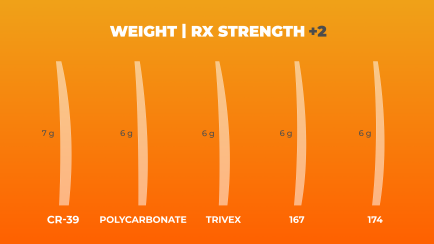
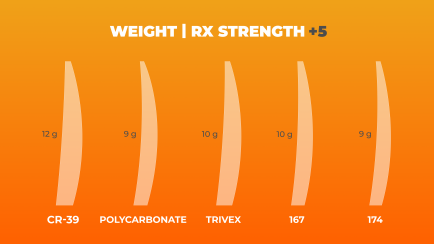
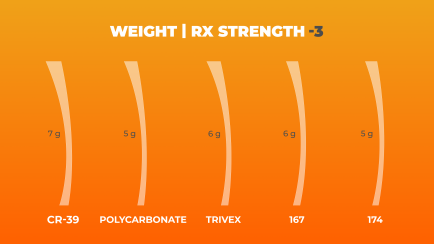
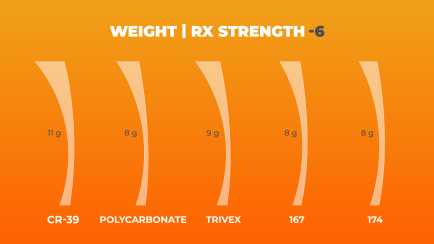
Tyler was surprised to discover that the weight is pretty much the same across the board despite different prescriptions and lens materials. Aside from CR-39, which was slightly heavier, we can determine that weight isn't a huge factor in what lens material you pick.
Tyler's Takeaways
As an optician for 15+ years and one with prior experience in a lens-making lab, Tyler's main takeaway from this comparison is that the weight of the lens will be pretty consistent no matter which lens material you choose.
One other thing to note is that we performed these tests with a cosmetic pair of eyeglasses, as opposed to a wraparound sports frame. Keep your eyes peeled if you love this technical stuff—we may repeat this experiment while accounting for a higher base curve!
Prescription Glasses at SportRx
Need prescription glasses? Done. When you shop with us, you’ll find video guides and tooltips throughout the build process as you customize the perfect pair. An answer to all your questions is at your fingertips, and if you want to chat with an expert, Contact Us. We’ll put you in touch with one of our friendly in-house opticians who can help you build your prescription glasses.
Ditch risky online shopping with the See Better Guarantee. Try your glasses for 45 days. If you’re not satisfied, send them back. Get a full refund, exchange, or credit towards a better pair. And return shipping? Covered. Get your pair of prescription glasses at SportRx today!

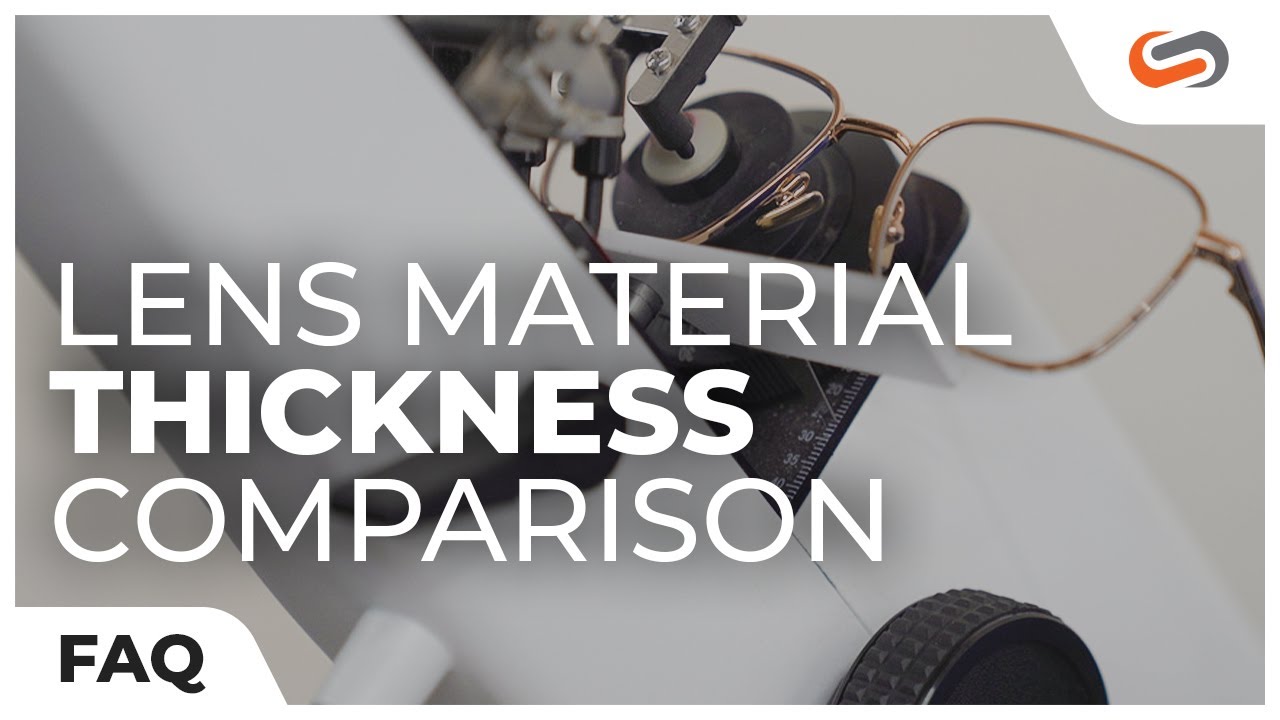


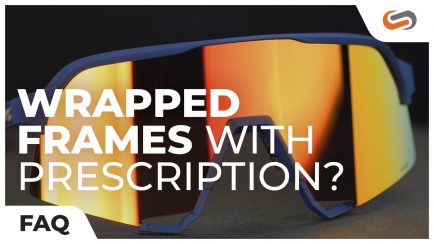
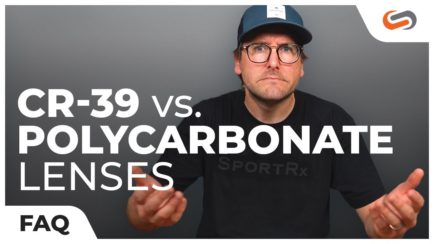
Could you edit the article to give the size of the lenses, though? I tried putting the numbers into the online lens calculator, and I'm guessing that lens width must be about 58. I don't go above 49 for my distance glasses! I think I'd have 7.8mm with CR-39, which is a long way off the numbers this suggests.